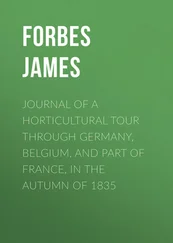Horticultural Reviews, Volume 49
Здесь есть возможность читать онлайн «Horticultural Reviews, Volume 49» — ознакомительный отрывок электронной книги совершенно бесплатно, а после прочтения отрывка купить полную версию. В некоторых случаях можно слушать аудио, скачать через торрент в формате fb2 и присутствует краткое содержание. Жанр: unrecognised, на английском языке. Описание произведения, (предисловие) а так же отзывы посетителей доступны на портале библиотеки ЛибКат.
- Название:Horticultural Reviews, Volume 49
- Автор:
- Жанр:
- Год:неизвестен
- ISBN:нет данных
- Рейтинг книги:3 / 5. Голосов: 1
-
Избранное:Добавить в избранное
- Отзывы:
-
Ваша оценка:
- 60
- 1
- 2
- 3
- 4
- 5
Horticultural Reviews, Volume 49: краткое содержание, описание и аннотация
Предлагаем к чтению аннотацию, описание, краткое содержание или предисловие (зависит от того, что написал сам автор книги «Horticultural Reviews, Volume 49»). Если вы не нашли необходимую информацию о книге — напишите в комментариях, мы постараемся отыскать её.
Hydrangea quercifolia
Horticultural Reviews, Volume 49 — читать онлайн ознакомительный отрывок
Ниже представлен текст книги, разбитый по страницам. Система сохранения места последней прочитанной страницы, позволяет с удобством читать онлайн бесплатно книгу «Horticultural Reviews, Volume 49», без необходимости каждый раз заново искать на чём Вы остановились. Поставьте закладку, и сможете в любой момент перейти на страницу, на которой закончили чтение.
Интервал:
Закладка:
Hydrangea quercifolia has opposite leaves with 5 to 7 lobes and pinnate venation, resulting in a superficial resemblance to the leaves of lobed oak ( Quercus ) species. The margins are coarsely serrate, and both leaf surfaces are pubescent with the abaxial surface more so than the adaxial surface. Apical buds and young leaves often have very high trichome densities and are therefore highly pubescent. Interestingly, H. quercifolia is the only Hydrangea species to have branched trichomes with tannin deposits (Stern 1978). Fall leaf color is variable according to genotype and environmental conditions, such as shade, and ranges from pale yellow to burgundy red.
The stems are densely pubescent and coarse, developing exfoliating bark with age. The growth rings of H. quercifolia , like that of several other Hydrangea species, are semi‐porous; a distinguishing feature of H. quercifolia wood is the presence of axial xylem parenchyma (Stern 1978). Year‐old and older stems have abundant root initials or latent buds, which likely aid the plant in self‐propagation by layering.
In the wild, mature plants occasionally grow to greater than 5 m in height. Oakleaf hydrangea is often at least as wide as it is tall, and older plants tend to develop a spreading habit as the lower branches naturally propagate by layering. Wild plants tend to produce few to several clumps in close proximity to one another, spreading both by stem layering and by rhizomatic suckering ( Figure 1.5). In the landscape, many cultivars can be 2 to 3 m in height, with dwarf cultivars reaching only 0.5 to 1 m at maturity.
Oakleaf hydrangea blooms from May through June in its native range, flowering on the previous season’s wood ( Figure 1.6a). Inflorescences are panicles with fully fertile, perfect florets in the center that are partly covered by semi‐sterile florets with conspicuous petaloid sepals around the exterior ( Figure 1.6b). Each fertile floret contains two stigmas and up to 10 stamens. Conspicuous florets indeed do possess all reproductive parts, albeit in reduced size. There are four orbicular conspicuous sepals which are typically white in color, fading to various shades of pink or brown as the inflorescence senesces. In a study of floral morphology in the tribe Hydrangeeae, Jacobs (2010) found H. quercifolia to have the highest number of conspicuous florets per inflorescence out of 36 taxa examined, with up to 50 per inflorescence. This is twice as many as the species with the next highest number, H. paniculata, having up to 25 conspicuous florets per inflorescence. In that study, H. quercifolia was found to be the only species to consistently produce more than 20 conspicuous florets per inflorescence. These data show the promising potential for H. quercifolia to serve as a striking landscape plant with large conspicuous inflorescences.

Figure 1.5 Photographs of Hydrangea quercifolia clonal habit. Each photograph displays the clumping nature of oakleaf hydrangea in the wild.

Figure 1.6 Stages of floral development: (a) young flower bud; (b) full flower;(c) senescing flower with developing fruit; (d) senesced flower with dehiscent fruit.
( Source : Photo credits: A. Sherwood.)
Hydrangea quercifolia fruit are dry dehiscent capsules, which fade from green during the growing season to brown at maturity when the seeds dehisce. Once pollinated, the conspicuous florets invert and the fruit begin to ripen (in Figure 1.6compare the orientation of florets in 1.6b and 1.6c). The stigmas dry and form horn‐shaped appendages on the top of the capsule with an aperture between them to allow seed dispersal. Each fruit contains several seeds, which are relatively small, approximately 0.6 mm in length, with longitudinal striations ( Figure 1.6d) (Hufford 1995). Seed color ranges from light tan to dark brown, being ellipsoidal to ovate in shape.
VI. BIOTIC AND ABIOTIC CONSIDERATIONS
Oakleaf hydrangea has the unique ability to flower in dense shade as well as tolerate full sun. The capacity to flower even in deep shade sets it apart from most other flowering shrubs (Dirr 2004). Nevertheless, blooming improves with sunlight, as does flower color on genotypes which become pink with age. Similarly, fall foliage color is also enhanced on sun grown plants. However, if planted in prolonged direct sunlight in hot climates, the leaves have a tendency to wilt and desiccate. Oakleaf hydrangea are more sun tolerant in landscapes located in cooler climates, although flowering may be less impressive under such conditions (Lawson‐Hall and Rothera 1995). In the wild, H. quercifolia tends to occur in shady forest understories and is rarely found in daylong full sun situations.
Like most hydrangeas, H. quercifolia requires moist but well drained soil and will wilt in hot periods of the day when moisture is limiting; even when adequately watered, plants may still wilt when under extremely high temperatures unless protected from direct sun. Oakleaf hydrangea is susceptible to several root rot diseases, particularly in wet soil (discussed below), so care must be taken not to irrigate too frequently. Indeed, wild H. quercifolia most frequently occurs in well‐drained substrates such as cliff faces, steep ravines, and rocky outcrops ( Figure 1.4).
Limited information is available regarding cold hardiness in Hydrangea quercifolia . Dirr et al. (1993) used controlled freezing tests on ‘Alice’ and ‘Alison’ to determine cold hardiness and found the maximum hardiness was achieved in December with both accessions surviving –27°C (which corresponds to USDA cold hardiness zone 5a). ‘Alice’ maintained cold hardiness longer into spring than ‘Alison’, suggesting that it may resist deacclimation longer, and therefore tolerate late freezes better. Additionally, this may indicate that genotypic variability for both cold hardiness and deacclimation exists within the species. The full range of variation in midwinter cold tolerance for the species and a subset of cultivars is currently being explored by the University of Minnesota Woody Landscape Plant Breeding and Genetics program. Preliminary results indicate a wide range of variation for deacclimation timing (Sherwood et al. 2021).
H. quercifolia is susceptible to several vascular pathogens. Phytophthora nicotiana Breda de Haan, Pythium spp., and Rhizoctonia solani Kühn are fungal pathogens that infect the vasculature of oakleaf hydrangea through the roots and cause wilt disease. While no genetic resistance has been reported to exist against these various root rot pathogens, cultural practices can be employed to minimize disease pressure. Avoiding frequent irrigation and using a freely draining medium for container‐grown plants can reduce the severity of infections (Baysal‐Gurel et al. 2016b). Armillaria mellea Kumm. and A. tabescens Emel are also vascular wilt fungi that can infect oakleaf hydrangea and are especially problematic with in‐ground plantings. One possible source of Armillaria is wood mulch infected with the fungus, and therefore care should be used when using such mulching.
Many foliar pathogens have been reported to infect hydrangeas, including Cercospora hydrangeae Atk., Corynespora cassiicola Wei, Phoma exigua Sacc., Glomerella spp., Myrothecium roridum Sacc. , Alternaria alternata Keissl., Xanthomonas campestris L., and Botrytis cinerea Pers. (Hagan et al. 2004; Mmbaga et al. 2012; Mmbaga et al. 2015). Among these, Ce. hydrangeae and Co. cassiicola are the most frequently occurring on infected H. macrophylla leaves (Mmbaga et al. 2012). The fungus Ce. hydrangeae and the bacteria X. campestris have been identified on oakleaf hydrangea with foliar leafspot symptoms (Hagan and Mullen 2001; Mmbaga and Oliver 2007; A. Sherwood unpubl.). Leafspots caused by X. campestris on oakleaf hydrangea are typically brown, angular lesions that are contained by the leaf veins ( Figure 1.7). Because dead leaves are a source of inoculum, removing fallen leaves and avoiding overhead irrigation are effective control strategies (Baysal‐Gurel et al. 2016a). Further, Mmbaga and Oliver (2007) have shown a kaolin powder based natural pesticide to be as effective in protecting H. quercifolia from X. campestris infection as the broad‐spectrum fungicides that were also tested. Powdery mildew ( Golovinomyces orontii syn. Erysiphe polygoni ) is a common foliar disease on H. macrophylla , but H. quercifolia seems to be relatively more resistant (Baysal‐Gurel et al. 2016a); this difference may be due to the pubescent leaf surfaces of H. quercifolia in comparison to the glabrous leaves of H. macrophylla .
Читать дальшеИнтервал:
Закладка:
Похожие книги на «Horticultural Reviews, Volume 49»
Представляем Вашему вниманию похожие книги на «Horticultural Reviews, Volume 49» списком для выбора. Мы отобрали схожую по названию и смыслу литературу в надежде предоставить читателям больше вариантов отыскать новые, интересные, ещё непрочитанные произведения.
Обсуждение, отзывы о книге «Horticultural Reviews, Volume 49» и просто собственные мнения читателей. Оставьте ваши комментарии, напишите, что Вы думаете о произведении, его смысле или главных героях. Укажите что конкретно понравилось, а что нет, и почему Вы так считаете.












